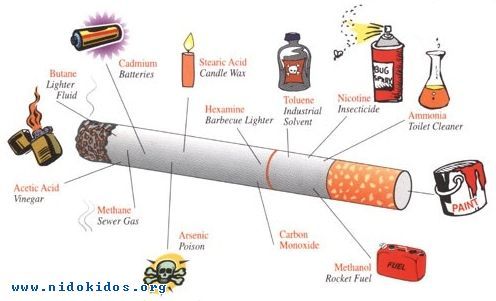7 ways to quit smoking
Last reviewed: 23.04.2024

All iLive content is medically reviewed or fact checked to ensure as much factual accuracy as possible.
We have strict sourcing guidelines and only link to reputable media sites, academic research institutions and, whenever possible, medically peer reviewed studies. Note that the numbers in parentheses ([1], [2], etc.) are clickable links to these studies.
If you feel that any of our content is inaccurate, out-of-date, or otherwise questionable, please select it and press Ctrl + Enter.
Many people, even with a huge desire, can not quit smoking. Some lucky ones cope with the bad habit themselves, if they do not lack the willpower, but most, however, require a course of treatment.
Smokers have heard about the dangers of smoking and know that a harmful habit can provoke the development of a cancerous tumor, but this knowledge usually ends.
Systematic smoking is one of the main causes of blood vessel disease, which narrows under the action of nicotine, which leads to the development of atherosclerosis, as well as obliterating endarteritis of the arteries of the lower leg and foot.

Obliteration of the vessels (constriction) leads to the fact that the blood begins to flow badly in the limb, which can eventually lead to gangrene. The number of heartbeat smoking a person reaches 15-20 thousand per day, because each cigarette smoked increases the beat by 15-20 beats per minute.
Nicotine replacement therapy
Currently, various forms of nicotine replacement therapy are available: inhalers, tablets, chewing gums, patches, nasal sprays and sublingual tablets. The effectiveness of substitution therapy is associated with a decrease in cravings for smoking and other symptoms that accompany the rejection of cigarettes.
Nicotine replacement therapy is a temporary way of treating tobacco dependence and is not used as a long-term replacement. Counseling, care or group therapy programs can improve the effectiveness of nicotine replacement therapy.
During the use of nicotine substitutes, smoking is strictly prohibited. Smoking in combination with nicotine substitutes can simultaneously increase the level of nicotine in the blood to a toxic level.
Nicotine replacement therapy can negatively affect people with certain diseases, such as heart disease, blood circulation and pregnant women. Before starting any nicotine replacement therapy, be sure to consult a doctor.
Nicotine patches
Plasters are sold in pharmacies, but it is better to consult a doctor before using them. They are easy to use and sold in different dosages of nicotine. The plaster is changed every 24 hours, and pasted on the back, shoulders or hands.
Nicotine chewing gum
Nicotine chewing gum can also be bought at the pharmacy. The chewing gum contains a small amount of nicotine, which is absorbed into the mucous membrane of the mouth. Chewing gum delivers nicotine into the bloodstream faster than a band-aid. Coffee, tea and sour drinks interfere with the absorption of nicotine, so after drinking drinks, do not use the chewing gum for fifteen minutes. Side effects of nicotine chewing gum - indigestion, mouth ulcers, hiccups and irritation in the throat.
Nicotine inhalers

Nicotine inhalers are filled with nicotine cartridges. Inhalers are available only on prescription. The dosage of nicotine is individual, because people use the inhaler as needed. In addition to the replacement of nicotine, the inhaler satisfies one more habit of the smoker - to bring the cigarette to the mouth. Side effects include irritation of the throat and oral cavity due to frequent use of the inhaler.
Nicotine lollipops

Lozenges exist in two dosages, 2 and 4 mg. Nicotine tablets are taken within 12 weeks, and during this period the dose gradually decreases. Nicotine candies carry about the same effect as chewing gum, but about 25% more nicotine is released from them compared to chewing gum.
Hypnosis
Some smokers use hypnosis as an auxiliary tool for quitting smoking. Hypnotherapy uses methods such as management of the imagination, meditation and relaxation. Hypnotherapists on a subconscious level are trying to convince a person to stop smoking in order to break the emotional connection with cigarettes. When the patient is in a relaxed state, the hypnotherapist motivates the refusal to smoke.
Acupuncture

Needles are placed in certain areas on the body, which play a role in the specific health problem. It is believed that acupuncture causes the release of endorphins and a decrease in symptoms of quitting.
Bupropion
This is a relatively new tool in the fight against smoking. Bupropion enhances the action of certain neurotransmitters in the brain, in particular, dopamine, which plays an important role in the treatment of nicotine addiction. This drug helps to soften and control cravings for nicotine.

 [
[